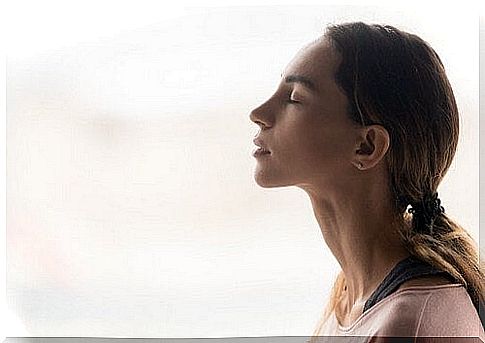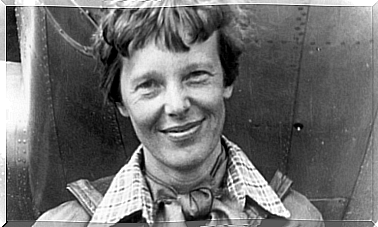Breathing Techniques To Calm Anxiety

Breathing techniques teach us to focus on breathing. They are usually applied during a psychotherapy course or are the focus of other practices, such as yoga or pilates.
They have also become a potentially useful tool for finding relief from anxiety. However, those who suffer from prolonged severe anxiety may feel that these techniques are ineffective. What hinders the effectiveness of breathing techniques in order to calm anxiety?

Anxiety in human evolution
Millions of years ago the human species struggled for survival in a very different way than it does today: by hunting and gathering food, as well as attempts to defend itself from predators.
In the latter case, when a predator approached, the mechanisms of action that secured the human being were anxiety and activation, which in turn set the fight-flight system in motion and offered energy to this. mechanism. The activation of the fight-and-flight system causes psychophysiological changes:
- Changes in the nervous system, with an increase in the sympathetic nervous system response.
- Increase of the noradrenergic response.
- Increased cortisol levels, with inhibition of the immune system and inflammatory response.
To sum up, with the activation of the fight-and-flight system, the individual was more likely not to have the worst of the predator’s threat.
This system is still present in humans, and is activated when security is threatened by external dangers. This is despite the fact that the environment has changed and in many cases this system is not useful in fighting modern threats.
Changes in the activation of the fight-flight response in the current context
Nowadays, it is not every day that you face forest predators. However, modern life activates these mechanisms even if the daily threats have changed (problems of work, at home, of an economic nature, in the family, in social relationships, etc.).
Here is where the fight-and-flight system is activated. The sensations generated by the activation are generally unpleasant and this very often causes the person to manage the situation by avoiding them.
Why don’t breathing techniques always work?
Breathing techniques have been validated by empirical studies as one of the effective treatments in the control of unpleasant symptoms of anxiety, along with other treatments of cognitive-behavioral or third-generation therapy.
In addition to this, if you try to Google “how to calm or reduce anxiety”, the first result will be related to breathing techniques. In some cases, however, despite a certain amount of relief, the anxiety does not completely go away.
A feeling of lack of air may also arise when the rhythm of breathing is changed, resulting in an accentuation of certain symptoms caused by anxiety.
The association between breathing techniques and anxiety control can induce the individual to practice them only in the presence of this state of mind. Following this, the practice of these breathing techniques could favor the onset of certain symptoms that the individual will associate with anxiety.
The risk is therefore that of associating exercise with the condition of tension. On the other hand, the simplification and automation of the techniques would not take into account the goal that requires the patient to recognize the symptoms.

What to do when breathing techniques don’t work?
Noticing that breathing techniques to calm anxiety don’t work can lead to frustration. Very often humans claim to get rid of unpleasant symptoms by focusing on them instead of focusing on the outside world.
Breathing techniques can act as a lifeline in the middle of a storm: they hold the boat right where it is, without the waves sinking it. It is not an easy task, in fact, and breathing techniques are effective if practiced consistently and not only when you feel anxiety.
Techniques that focus on contact with the present can be an alternative way to complete breathing exercises.
Mindfulness tools help us keep steady in the present, helping the mind to adopt the role of an external observer in search of solutions to a problem. In this sense we can play with attention in many ways. Eg:
- Focusing on the rhythm of breathing and the movement of the abdomen with each inhalation and exhalation.
- Observing objects, colors, as if we were seeing them for the first time.
- Giving a name, a color, a shape, a consistency, a temperature to the sensations responsible for malaise.
- Listening to music and focusing our attention on the different musical instruments we listen to to experience them little by little.
- Following a conscious diet and paying attention to physical sensations and the pleasantness of food.
To sum up, using breathing techniques as tools to control anxiety can lead us to associate them with it. In any case, the goal is to perform them even in moments when there is no room for anxiety. These strategies can be combined with other exercises or disciplines that favor greater contact with the present.









